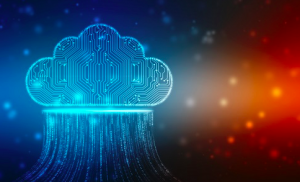<LOOKING TO THE FUTURE>
OER (Open Educational Resources)
(Image by iLearnCollaborative)
In Stephen Downes’s (2019) document defined the traditional open educational resources which are “as educational contents that reside in the public domain or have been released under an open license that permits no-cost access, use, adaptation and redistribution” (Downes, 2019, Abstract section, para. 1). Moreover, UNESCO and Commonwealth of Learning (COL) (2011) also described the OER is any public medium that is in the public domain and allows everyone access, use, repurpose, reuse and redistribution. And provide learning and research materials. Those mean OER is not just E-learning or online learning. OER includes all shareable, makable, and re-makable digital format for everyone. OER includes the entire course, program materials, modules, course guides, teaching and learning materials, textbooks, articles, videos, assessment tools, interactive materials, databases, software, apps and all educationally useful materials (UNESCO & COL, 2011).
Kanwar, Kodhandaraman, and Umar (2010) mentioned that advantages of OER which are helps save time and money in developing course content in regions such as developing countries, promotes the sharing of knowledge from multiple people, and provides resources for educators to strengthen their capacities. OER also helps preserve and disseminate indigenous knowledge and improve educational quality at all levels (Kanwar et al., 2010). For these reasons, OER is very important material for current and future education. In order to everyone use educational resources, OER is essential because we live close, we live far away, and we have abundant educational resources, but we also lack it. In this case OER can solve most of these problems.
(OER Introduction, 2013)
NEW OER TECHNOLOGIES
Main Article: Downes, S. (2019). A Look at the Future of Open Educational Resources. International Journal of Open Educational Resources, 1(2). Retrieved from https://www.ijoer.org/a-look-at-the-future-of-open-educational-resources/
This document is an OER view of the future education. Here are four new OER technologies: cloud, artificial intelligence, open data, and training content resources (Downes, 2019). In order to make effective usingof OER in the future, it is necessary to modify the way users think, and the instructor designer should think in terms of environment and experience. It is also said that the vision of the instructors and designers needs to be changed, and that the collaboration between designers and developers is necessary.
Among the future OER technologies, I concentrate on cloud-based technology because that was very impressive. Rather than meeting, talking and creating something in person, sharing data remotely and creating new creations based on the cloud is a true future technology. This cloud technology has been used in the past and will be used more in the future. In addition, in the case of AI, I think it will enrich open education, but advances in AI can lead to passive education for students. Therefore, the development of student-centered open education is very important.

(Image by Adobe Stock)
CONCLUSION
This article talks about several future open education technologies and their development and realization. As I said earlier, I believe that OER will have many positive effects on the development of future education. There is no doubt that open education and OER will play a role in future education.The reason is that now and in the future, humanity will be more networked and able to stay virtually close. As we prepare for and welcome future education, our educators must be alert to the shortcomings of open education that may occur and prepare to step up to the most effective outcomes.
REFERENCES
Downes, S. (2019). A Look at the Future of Open Educational Resources. International Journal of Open Educational Resources, 1(2). Retrieved from https://www.ijoer.org/a-look-at-the-future-of-open-educational-resources/
Kanwar, A., Kodhandaraman, B., & Umar, A. (2010). Toward sustainable open educational resources: A perspective from the Global South. American Journal of Distance Education, 24, 65–80. doi:10.1080/08923641003696588
UNESCO & Commonwealth of Learning (COL). (2011). Guidelines for open educational resources (OER) in higher education. Paris & Vancouver: Author.

Leave a Reply